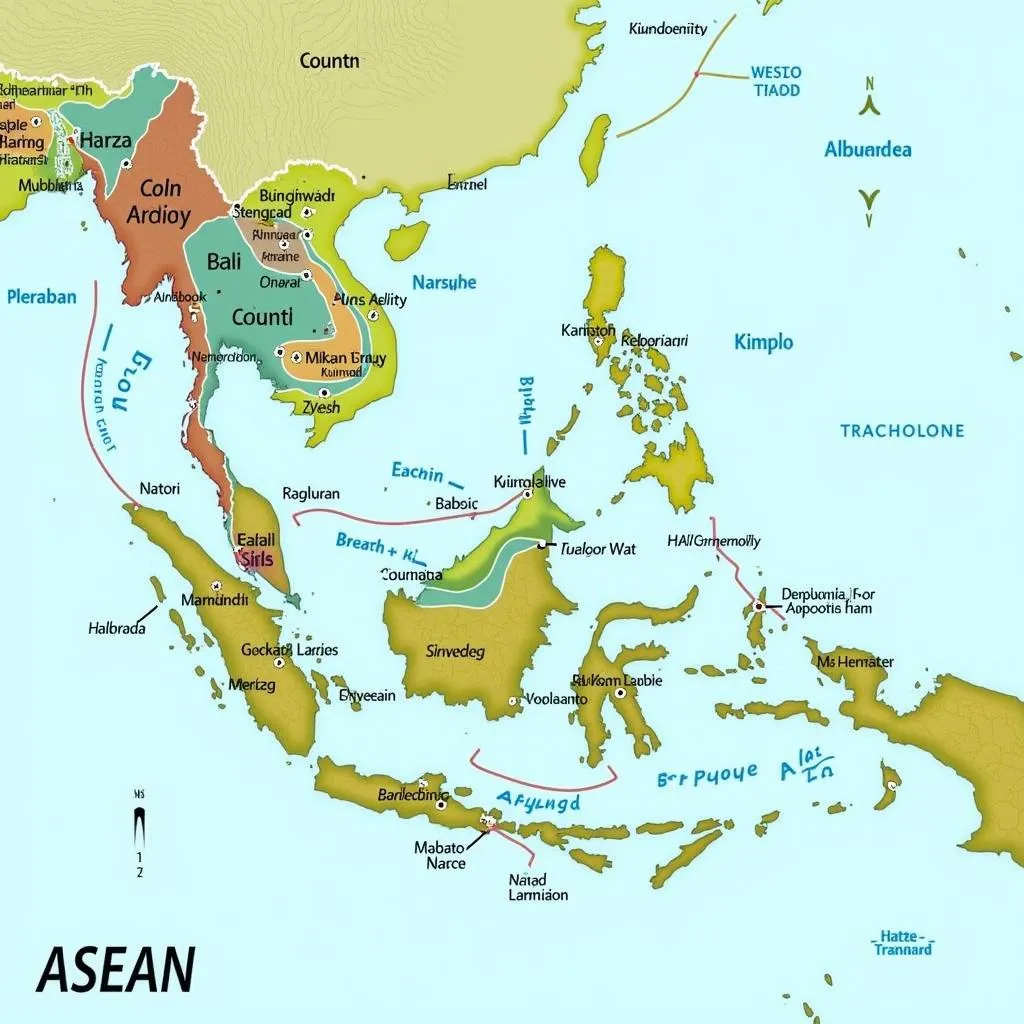The diverse linguistic landscape of Southeast Asia presents both opportunities and challenges. While “ASEAN translation” plays a crucial role in bridging communication gaps, is it truly enough to foster understanding and collaboration within this dynamic region? This article delves into the complexities of language in ASEAN, exploring the limitations of translation and highlighting the need for comprehensive language solutions.
Beyond Words: Cultural Nuances and Context
While translation effectively conveys the literal meaning of words, it often falls short in capturing the subtle nuances, cultural references, and contextual understanding essential for effective communication. ASEAN, home to a rich tapestry of cultures, requires a deeper appreciation of these complexities to truly bridge the divides.
For instance, a marketing campaign translated directly from English to Thai might not resonate with the target audience due to differing cultural values and communication styles.
“It’s not just about translating words, it’s about translating meaning,” says Dr. Ananya Lim, a cultural communication expert specializing in Southeast Asia. “Understanding the cultural context and adapting the message accordingly is crucial for effective communication within ASEAN.”
The Limits of Technology: Human Touch in Translation
Technological advancements in machine translation have undoubtedly revolutionized the way we approach language barriers. However, relying solely on technology can be perilous, especially when dealing with the intricacies of Southeast Asian languages.
 Challenges of Machine Translation in ASEAN
Challenges of Machine Translation in ASEAN
Subtleties in tone, humor, and idiomatic expressions can be easily misinterpreted, leading to misunderstandings and even offense. Human translators, with their cultural understanding and linguistic expertise, play a vital role in ensuring accuracy, sensitivity, and cultural appropriateness.
Building Bridges: Multilingualism and Language Learning
While translation remains essential, promoting multilingualism and language learning within ASEAN is paramount. By encouraging citizens to learn each other’s languages, we can foster deeper understanding, empathy, and collaboration.
Imagine a future where business negotiations flow seamlessly in multiple languages, where cultural exchanges are enriched by shared linguistic experiences, and where the true potential of ASEAN integration is realized.
“Investing in language education is not just about acquiring linguistic skills,” emphasizes Dr. Lim. “It’s about building bridges of understanding and fostering a sense of shared identity within the ASEAN community.”
Embracing Diversity: A Multilingual Approach
Navigating language barriers in ASEAN requires a multifaceted approach that goes beyond mere translation. Embracing multilingualism, investing in language education, and fostering cultural sensitivity are crucial steps towards unlocking the full potential of this dynamic region.
 Solutions for ASEAN Language Barriers
Solutions for ASEAN Language Barriers
By recognizing the limitations of translation and adopting a more comprehensive approach to language, we can pave the way for a more inclusive, interconnected, and prosperous ASEAN community.
Conclusion
While “ASEAN translation” serves as a valuable tool, it’s merely the first step towards overcoming language barriers in Southeast Asia. By embracing the region’s linguistic diversity, investing in language education, and fostering cultural sensitivity, we can truly bridge communication gaps and unlock the full potential of ASEAN.
Is ASEAN translation enough? The answer is a resounding no. It’s time to move beyond translation and embrace a future where language becomes a bridge, not a barrier, to unity and progress in Southeast Asia.
